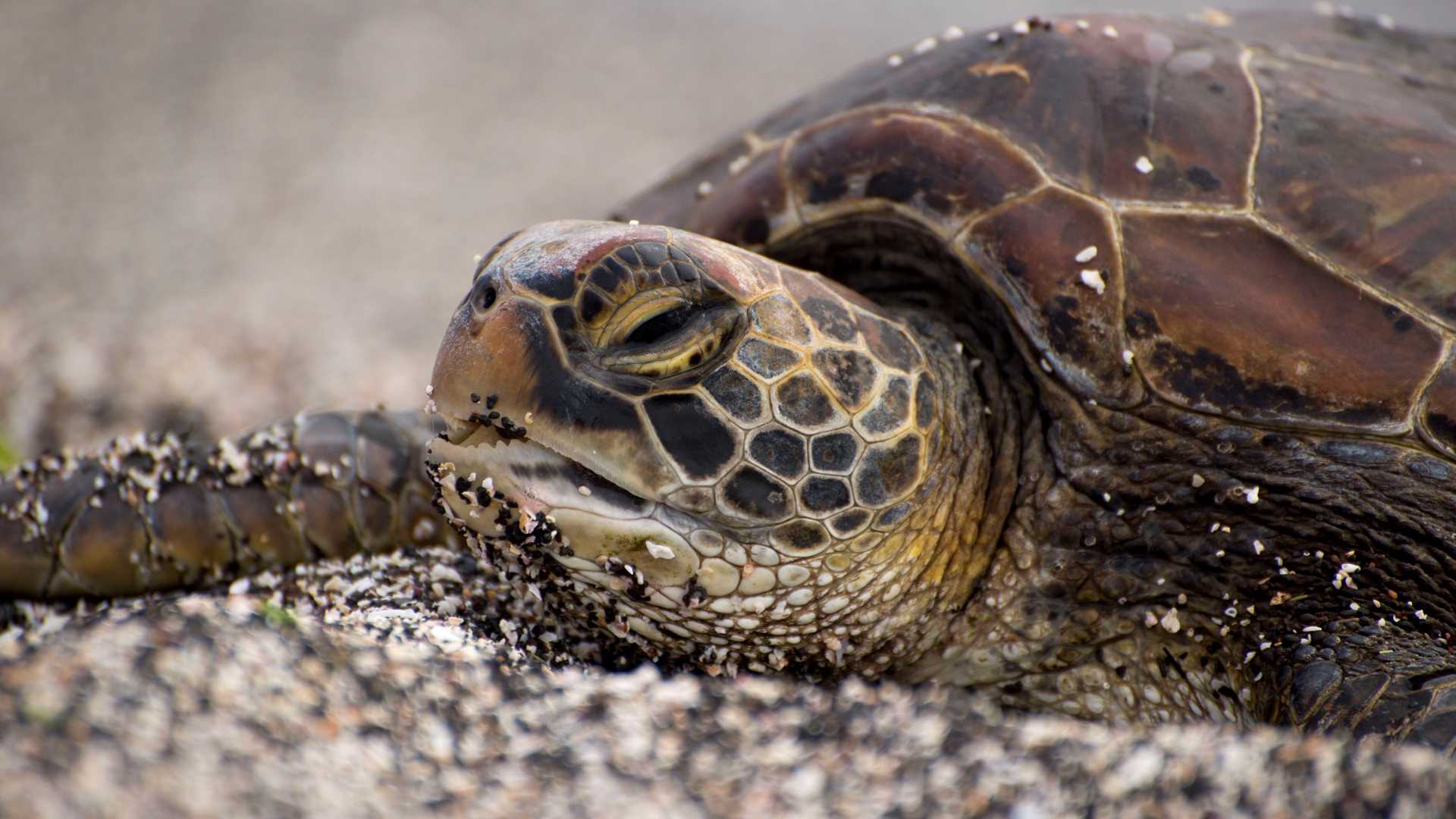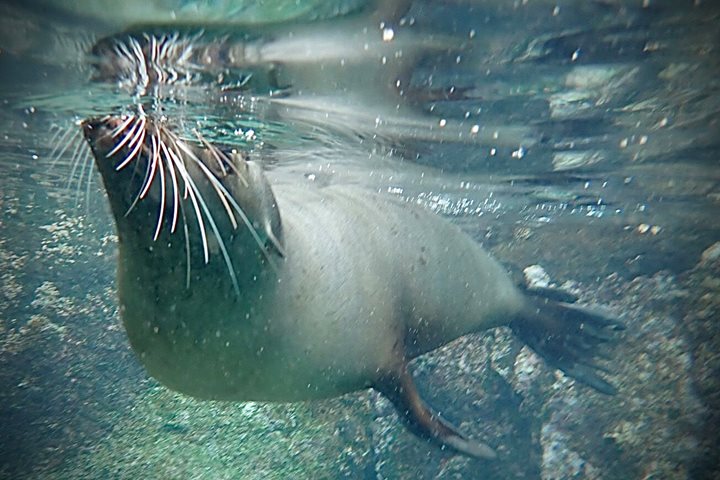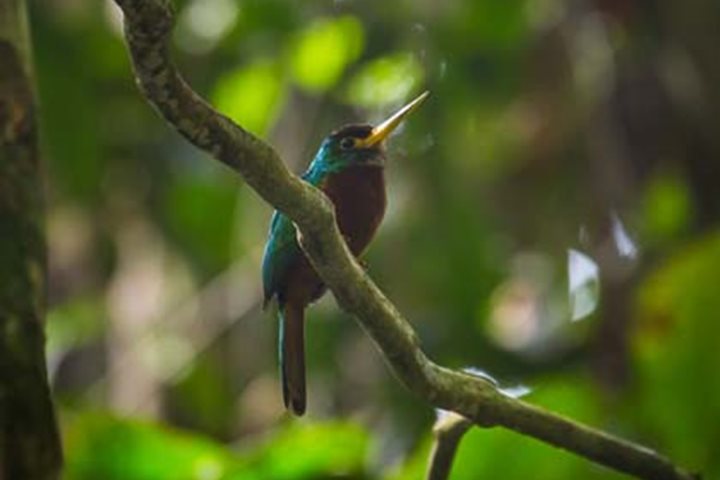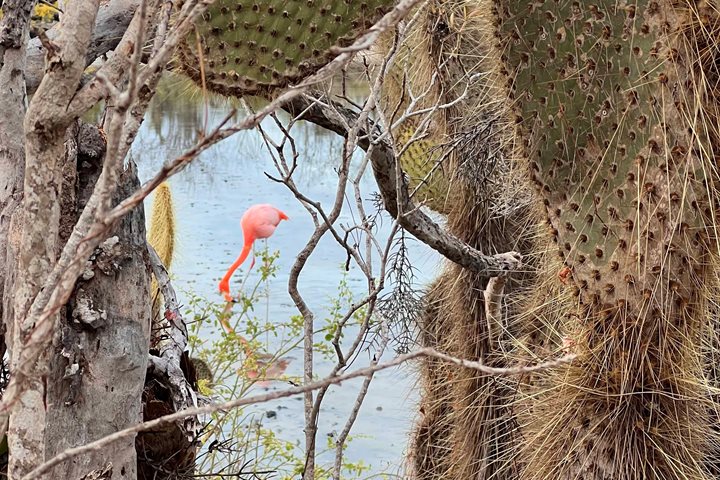After a long navigation from the central part of the archipelago, we arrived in the western part of the Galapagos early in the morning. This is where the youngest islands, Fernandina and Isabela, are found. These islands were named and baptized after Fernando de Aragon and Isabel de Castilla, king and queen of Spain in the late 1490s. We started our day early in the morning by exploring the calm seas west of Isabela in search of marine life. Heading south, the dramatic landscape looked imposed, with the gigantic Ecuador Volcano and its huge lava flows, witnesses of the explosive geologic past of the island.
After breakfast, we boarded Zodiacs to visit Punta Vicente Roca on Isabela Island. Along the vertical and colorful cliffs, we spotted both flightless birds that occur in the archipelago: Galapagos penguins and flightless cormorants. At the end of the bay, green sea turtles were the delight of our guests due to their tameness. They even approached our Zodiacs. On the rocks, fur and Galapagos sea lions rested pleasantly as marine iguanas walked over them. These amazing creatures inhabit this place due to the richness of the ocean, which is produced by upwellings of currents from the west. The richness of the ocean contrasts with stunning geological features, including titanic cliffs and evidence of great explosive eruptions that help us understand the formation of the archipelago millions of years ago. To finish this incredible morning, we returned to the Zodiacs to discover the incredible underwater world. This place is like nowhere else in the world. We had the opportunity to snorkel with Galapagos penguins, sea turtles, cormorants, stingrays, and many schools of colorful fish. What an amazing morning!
In the afternoon, we headed west to visit Punta Espinoza on Fernandina Island, one of the most spectacular sites in the Galapagos. The area is home to many endemic species and, of course, one of the most active volcanoes in the world, Volcan La Cumbre. We set foot on the small landing dock that leads to the beginning of the trail, which was covered in red and white mangroves. We spotted two Galapagos hawks looking for food. Walking along the lava field, hundreds of large marine iguanas welcomed us to the most preserved island in the enchanted archipelago. We observed these endemic reptiles everywhere. They covered large areas of the path as they basked under the sun. They secrete salt out of their nostrils, producing an unmistakable noise that we heard throughout our visit. We arrived at the flightless cormorant territory. We observed many of the birds as they made nests, collected seaweed, or dried out their stumpy wings. A Galapagos hawk watched the iguanas attentively, as if selecting the best prey. Little by little, the sun warmed up the environment. Some of the iguanas immediately headed to the ocean to feed. On the beach, Galapagos sea lions rested indifferently.
With the last beams of sun, we returned aboard, tired but very happy because this day was memorable and magical.







